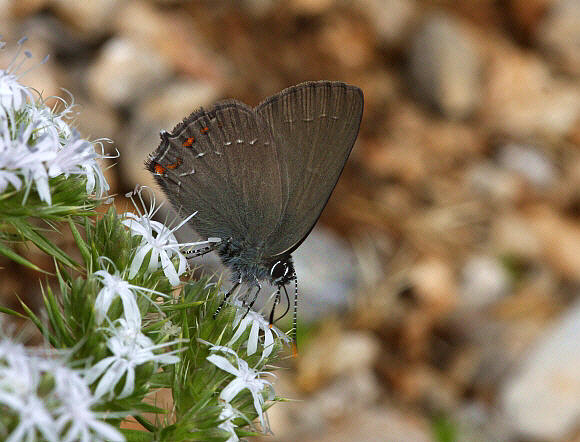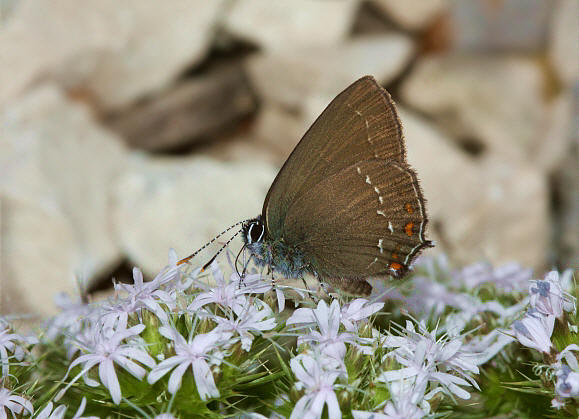
Ilex Hairstreak Satyrium ilicis, Vuganac, Croatia – Peter Bruce-Jones
Introduction
There are 64 described species in the genus Satyrium, which has at various times been known by the invalid synonyms Neolycaena, Nordmannia, Pseudothecla and Strymonidia. The genus occurs across the temperate, sub-arctic and subtropical regions of the northern hemisphere.
There are 7 species in Europe – acaciae, ilicis, esculi, spini, w-album, pruni and ledereri; of which only w-album and pruni occur in Britain.
Satyrium ilicis occurs in scattered colonise across most of central & southern Europe, and east to Israel, Lebanon and the western Ural mountains.
Habitats
This species is found in the vicinity of oak trees, but is not limited to woodland. It is often locally common on scrubby heaths, and in dry stony meadows and fields in woodland / grassland mosaics at altitudes between sea level and at least 1600m.
Lifecycle
The butterfly is single-brooded, emerging from late May to early August depending on altitude and local climatic conditions.
The eggs are laid singly or in pairs, on or near the buds of oaks, favouring Quercus coccifera but also using Q. ilex and Q. robur. They hibernate until the following March or April.
The plump green caterpillars feed on tender young oak leaves. They are attended by at least 2 species of ant – Camponotus aethiops and Crematogastor schmidtii, which “milk” them to sequester sugary fluids excreted from a gland on the caterpillar’s back. In return the ants provide them with protection from parasitoids and predatory insects.
 Ilex Hairstreak Satyrium ilicis, Vuganac, Croatia – Peter Bruce-Jones
Ilex Hairstreak Satyrium ilicis, Vuganac, Croatia – Peter Bruce-Jones
Adult behaviour
The adults are usually seen singly, when attracted to flowers including thyme, stonecrop, elder and bramble.
